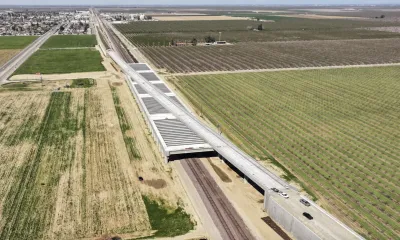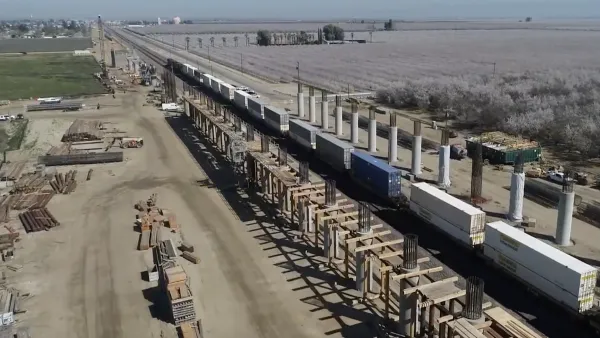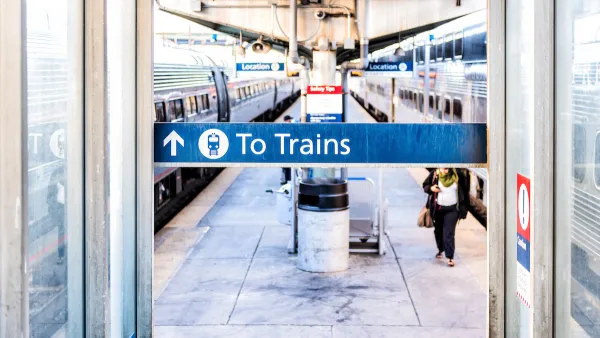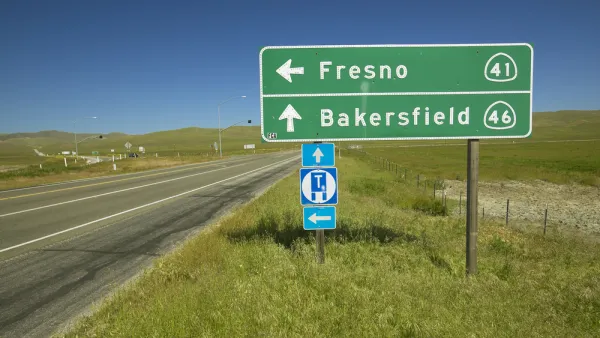An interactive exhibit offered visitors a glimpse into the future rail system.

The California High-Speed Rail Authority unveiled an interactive exhibit at the California State Fair featuring mock-ups of the future system’s trains, reports Marni Rose McFall in Newsweek.
“At the fair, visitors were invited to walk through the life-size mock-ups of train interiors, look at 3D renderings and models of the planned Central Valley stations and more,” McFall writes.
According to an information officer for the Authority, roughly 50,000 people visited the exhibit. “The 3D models show preliminary designs of four central valley stations, Merced, Fresno the Kings Tulare station and Bakersfield.”
The long-awaited project is underway, with 119 miles under active construction between Merced and Bakersfield in the Central Valley. “Completion is expected upon the initiation of passenger service, which is slated for between 2030 and 2033. The project plans for trains to run at speeds up to 220 miles per hour, enabling a trip from San Francisco to Los Angeles in under three hours.” The cost, initially projected at $40 billion, is now estimated to reach between $88 to $128 billion.
FULL STORY: California High-Speed Rail Design Gets First Public Test

National Parks Layoffs Will Cause Communities to Lose Billions
Thousands of essential park workers were laid off this week, just before the busy spring break season.

Retro-silient?: America’s First “Eco-burb,” The Woodlands Turns 50
A master-planned community north of Houston offers lessons on green infrastructure and resilient design, but falls short of its founder’s lofty affordability and walkability goals.

Delivering for America Plan Will Downgrade Mail Service in at Least 49.5 Percent of Zip Codes
Republican and Democrat lawmakers criticize the plan for its disproportionate negative impact on rural communities.

Test News Post 1
This is a summary

Test News Headline 46
Test for the image on the front page.

Balancing Bombs and Butterflies: How the National Guard Protects a Rare Species
The National Guard at Fort Indiantown Gap uses GIS technology and land management strategies to balance military training with conservation efforts, ensuring the survival of the rare eastern regal fritillary butterfly.
Urban Design for Planners 1: Software Tools
This six-course series explores essential urban design concepts using open source software and equips planners with the tools they need to participate fully in the urban design process.
Planning for Universal Design
Learn the tools for implementing Universal Design in planning regulations.
EMC Planning Group, Inc.
Planetizen
Planetizen
Mpact (formerly Rail~Volution)
Great Falls Development Authority, Inc.
HUDs Office of Policy Development and Research
NYU Wagner Graduate School of Public Service





























